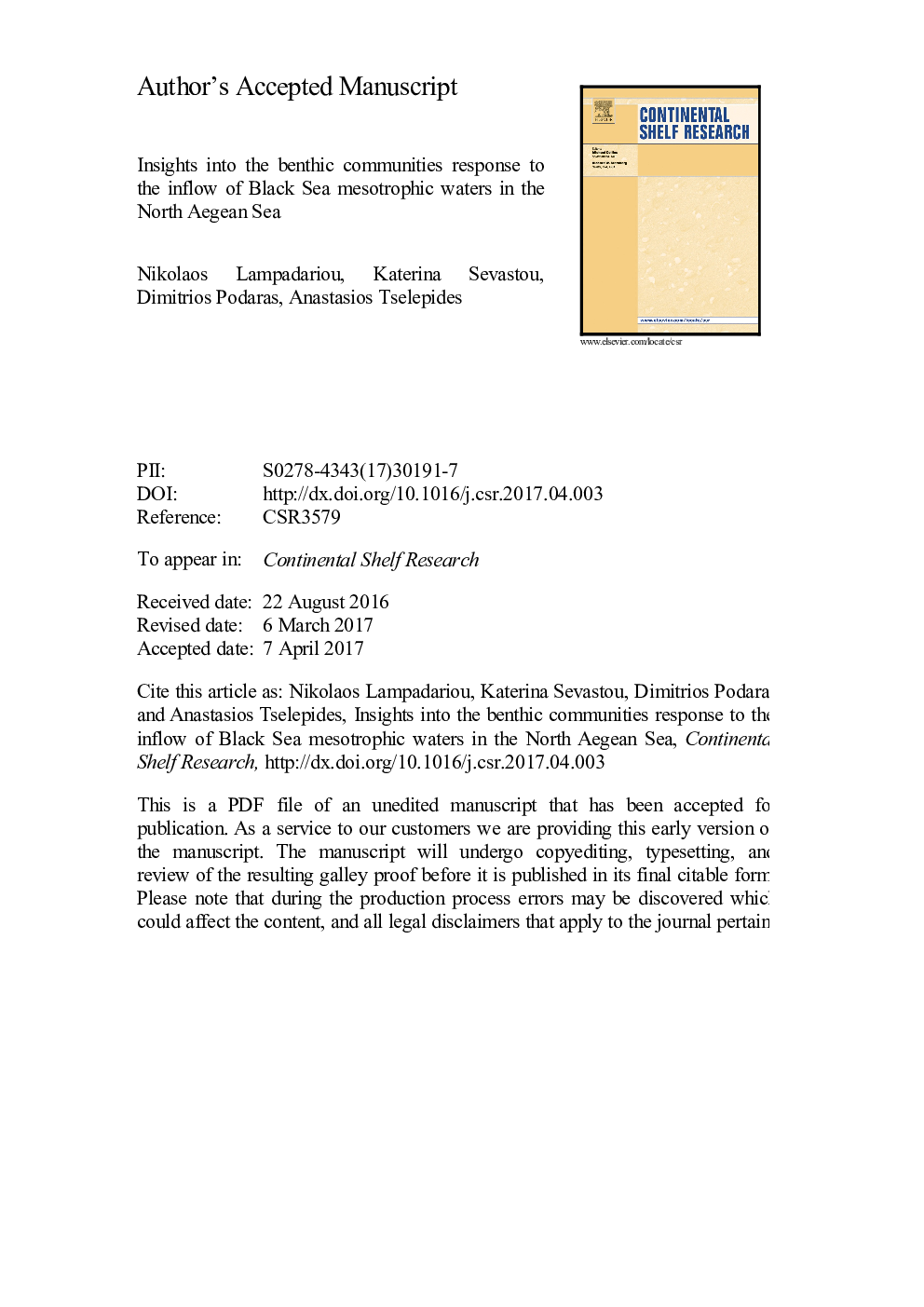| کد مقاله | کد نشریه | سال انتشار | مقاله انگلیسی | نسخه تمام متن |
|---|---|---|---|---|
| 8884176 | 1626064 | 2017 | 51 صفحه PDF | دانلود رایگان |
عنوان انگلیسی مقاله ISI
Insights into the benthic communities response to the inflow of Black Sea mesotrophic waters in the North Aegean Sea
ترجمه فارسی عنوان
مقدمه ای بر پاسخ جوامع بنتونی به ورود دریای مازوتروفی دریای سیاه در دریای شمال دریای اژه
دانلود مقاله + سفارش ترجمه
دانلود مقاله ISI انگلیسی
رایگان برای ایرانیان
کلمات کلیدی
دریای سیاه، دریای اژه، مایبنتوز، ماکروبنتوز، نماتدهای دریایی آزاد زندگی می کنند، سهام مستقل، تنوع
موضوعات مرتبط
مهندسی و علوم پایه
علوم زمین و سیارات
زمین شناسی
چکیده انگلیسی
The effects of the Dardanelles inflow of buoyant, modified Black Sea waters (BSW) of low salinity and temperature, on the meio- and macrobenthic communities of the north Aegean ecosystem was investigated during two cruises in October 2013 and March 2014. Sediment samples were collected from two stations subjected to the BSW effect, one shallow and one deep north of the Dardanelles Straits, and from two stations of similar bathymetry, which were considered to be outside the influence of BSW and were located to the south of the Dardanelles Straits. Results suggest that there is an effect of the BSW on benthos, as both meiofaunal and macrofaunal standing stocks were lower at the most distant, and therefore least affected from the inflow, station, and higher at the station of similar bathymetry which was affected the most by the BSW inflow. Univariate and multivariate non-parametric analyses (nMDS, PERMANOVA) provided further support, indicating differences between the two areas (North vs. South) in the case of the deep stations, while differences between depth categories were evident in the area outside the BSW influence zone. Distance-based linear modeling (DISTLM) indicated that meiofauna correlated with proxies of food availability and sediment characteristics. Macrofauna, on the other hand, showed a rather high significant correlation with depth only. Nematode species composition was statistically significant different between depth categories only, yet the nMDS ordination clearly separated the deep southern station from the rest, with non-selective deposit feeders dominating the stations under the influence of the BSW, and epistratum feeders being important at the stations outside the influence of the BSW. It is concluded that both the meiofaunal and macrofaunal communities at the northern stations benefit from a constant input of high amounts of organic matter to the seafloor, while those at the southern area may be occasionally affected by the thermohaline BSW front, which may reach as far as the southern stations, resulting in higher but rather unpredictable organic enrichment.
ناشر
Database: Elsevier - ScienceDirect (ساینس دایرکت)
Journal: Continental Shelf Research - Volume 149, 1 October 2017, Pages 162-173
Journal: Continental Shelf Research - Volume 149, 1 October 2017, Pages 162-173
نویسندگان
Nikolaos Lampadariou, Katerina Sevastou, Dimitrios Podaras, Anastasios Tselepides,
